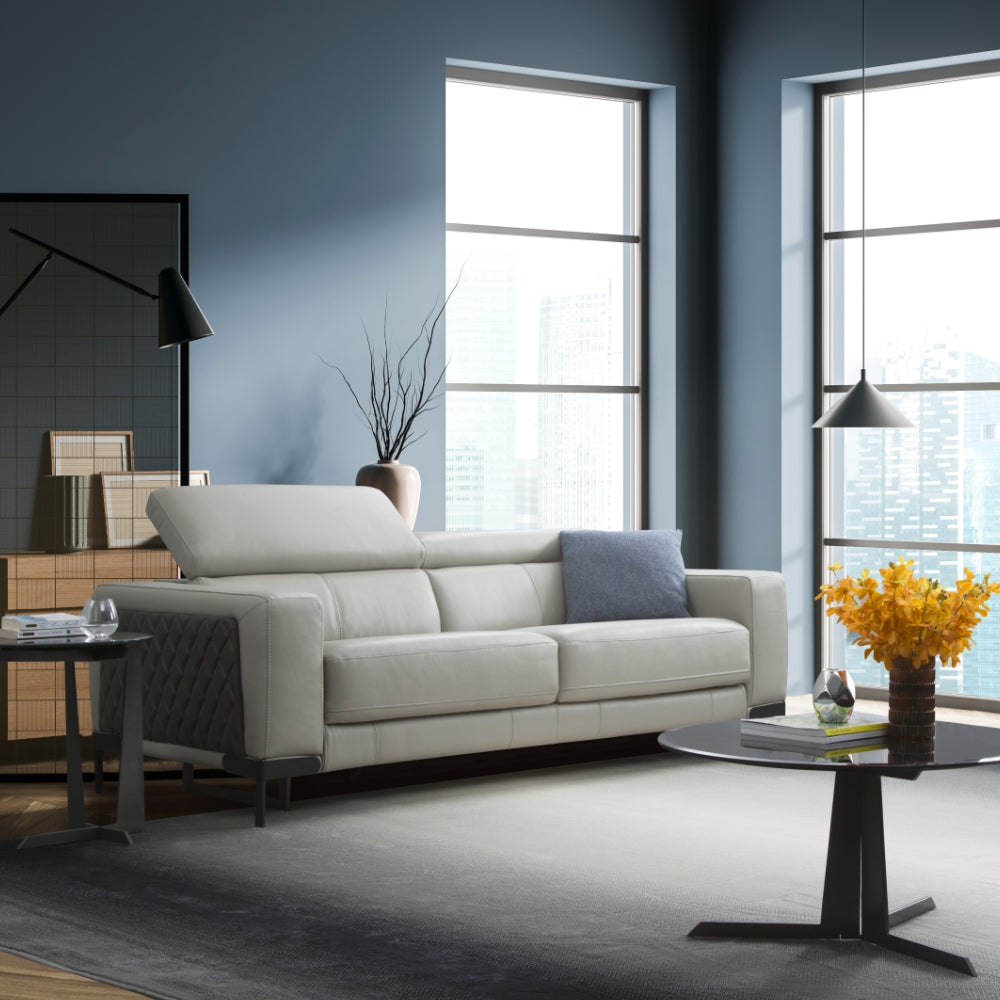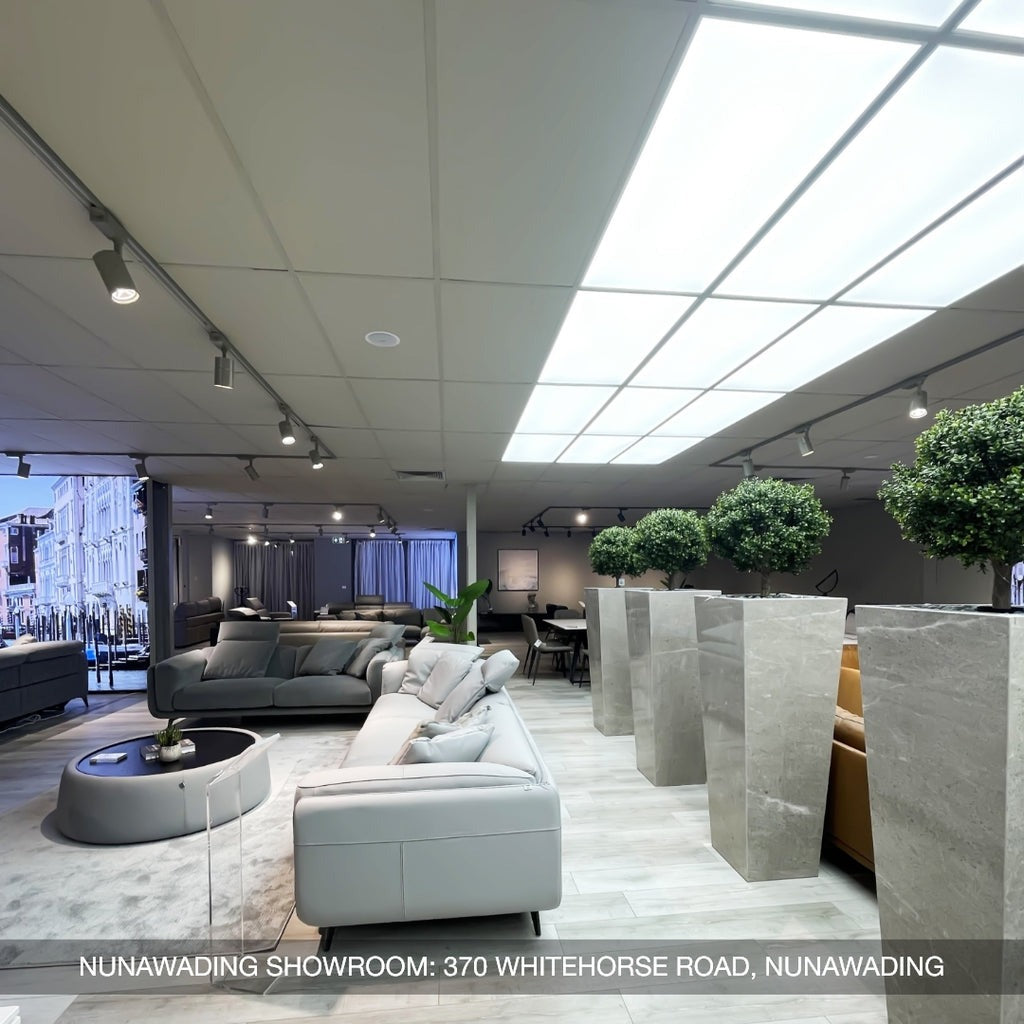Creating a healthier living environment starts with selecting the right furnishings for your home. Healthy home furniture plays a crucial role in maintaining indoor air quality and overall wellness. One significant step toward this goal is choosing VOC free furniture, which eliminates harmful chemicals often found in traditional products. Incorporating eco friendly wood furniture into your living spaces ensures sustainability without compromising style or comfort. Additionally, opting for non-toxic furniture safeguards your family from allergens and pollutants.
What are VOCs?
To understand the importance of VOC-free furniture, we first need to define Volatile Organic Compounds, or VOCs. These are carbon-containing chemicals that easily evaporate at room temperature, which explains why they're called "volatile." VOCs are classified as "organic" because of their carbon content. While some VOCs occur naturally, many are synthetic, arising from manufacturing processes.
One significant concern about VOCs is "off-gassing," a process in which these compounds are slowly released into the indoor environment. Off-gassing tends to be most intense when furniture or household products are brand new, giving rise to what we often recognize as the "new furniture smell" or "new car smell." Unfortunately, this isn't always harmless; it typically signals the presence of potentially hazardous chemicals.
Common sources of VOCs in furniture include:
- Finishes: Paints, varnishes, lacquers, stains, and sealants often contain solvents that release VOCs into your home's air. Opting for certified non toxic furniture can significantly reduce exposure from these sources.
- Adhesives: Glues used in furniture manufacturing, particularly in particleboard, plywood, and MDF (medium-density fiberboard), frequently contain VOC-emitting chemicals. According to the Australian guide non toxic furniture Australia, furniture that uses safer adhesives can help prevent long-term health risks.
- Fabrics and Upholstery: Textiles and cushioning materials like polyurethane foam often release VOCs due to chemical treatments such as flame retardants and stain repellents. Choosing eco-friendly sofa selections with natural fabrics or untreated upholstery materials greatly minimizes chemical exposure.
- Composite Wood Products: Particleboard, MDF, and plywood, common materials in conventional furniture, contain adhesives rich in formaldehyde a widely recognized harmful VOC. Consulting a reliable guide to eco-friendly furniture materials helps homeowners make informed choices about safer alternatives.
- Plastics: Furniture components made of certain plastics can also emit VOCs, contributing to indoor air pollution. Selecting furniture clearly labeled as VOC free furniture ensures a safer and healthier home environment.

To ensure a healthier home environment, look for furniture clearly labeled as VOC-free or made from low-emission materials.
Why are VOCs a Concern?
Understanding the risks of VOC exposure emphasizes the importance of choosing sustainable furniture options for your home, especially VOC free furniture. While stylish furnishings enhance your home's appearance, prioritizing health through careful selection of materials is essential.
Short-Term Health Effects
Exposure to high levels of VOCs, particularly in poorly ventilated indoor spaces, can quickly lead to noticeable symptoms, including:
- Eye, nose, and throat irritation – VOCs are irritants that directly affect sensitive mucous membranes.
- Headaches – Chemicals released by VOC-containing materials can trigger migraines or tension headaches.
- Dizziness – VOC inhalation can impair cognitive functions, causing dizziness or difficulty concentrating.
- Nausea – Acute exposure to VOCs can result in digestive discomfort or nausea.
- Allergic skin reactions – Direct contact with VOC-containing finishes or upholstery can provoke allergic dermatitis or rashes.
- Difficulty breathing – Individuals with asthma or respiratory conditions can experience aggravated symptoms, such as shortness of breath or asthma attacks.
Long-Term Health Effects
Even prolonged exposure to lower levels of VOCs presents significant health risks. Scientific research indicates that chronic exposure to VOCs can contribute to serious medical conditions, such as:
- Increased cancer risk – Formaldehyde, commonly found in adhesives used in particleboard and MDF, is classified as a known human carcinogen, linked explicitly to cancers such as nasopharyngeal cancer and leukemia.
- Damage to liver, kidneys, and central nervous system – Continuous inhalation of VOCs can accumulate in the body, causing harm to vital organs over time.
- Respiratory issues – Extended exposure increases the likelihood of developing chronic respiratory diseases, such as chronic bronchitis or persistent asthma.
- Reproductive health concerns – Some VOCs have been associated with fertility problems and other reproductive disorders, raising particular concerns for women who are pregnant or planning pregnancy.
Indoor Air Quality
VOCs are among the most significant contributors to indoor air pollution, a problem often underestimated compared to outdoor pollution. Indoor air pollutant levels can be two to five times higher than outdoor levels, with VOC emissions from furniture being a primary source. Improving air quality by choosing VOC-free or low-VOC furnishings is essential for health protection.
Vulnerable Populations
Certain groups, including children, the elderly, and those with existing respiratory conditions or chemical sensitivities, are especially susceptible to VOC-related health problems. Children breathe at faster rates than adults and are still developing physically, making them particularly vulnerable to environmental toxins. Likewise, elderly individuals or those with compromised immune systems can experience exacerbated symptoms, further highlighting the importance of carefully selecting non-toxic furniture for the home.

Choosing non-toxic, low-VOC furniture is essential for creating a safer, healthier home environment for all occupants.
What is VOC-Free Furniture?
Truly "VOC-free" furniture would contain absolutely no VOCs; however, achieving this is practically challenging since even natural materials can emit trace amounts. In practice, the term "VOC-free furniture" typically describes products with very low or "no added VOCs." Manufacturers achieve this by intentionally selecting safer materials and processes to eliminate or minimize VOCs during production. Opting for clearly labeled low-VOC or certified furnishings helps consumers reliably choose healthier home environments.

The term "VOC-free furniture" generally refers to products with very low VOC emissions or "no added VOCs."
How to Find Low-VOC Furniture
Whether you're redecorating your living room or creating an eco-friendly dining space, carefully evaluating furniture based on certifications, labels, and material choices can significantly reduce VOC exposure.
Certifications
Certifications provide reliable evidence that furniture meets rigorous standards for VOC emissions. Key certifications include:
- GREENGUARD and GREENGUARD Gold: Issued by UL Environment, these certifications test furniture for thousands of VOCs. GREENGUARD Gold sets especially strict emission limits designed for sensitive indoor environments, such as schools, childcare centers, and healthcare facilities.
- SCS Indoor Advantage and Indoor Advantage Gold: Offered by SCS Global Services, these certifications similarly verify products for low VOC emissions, ensuring healthier indoor air quality.
- CARB (California Air Resources Board) Phase 2: Specifically regulates formaldehyde emissions from composite wood products like MDF, plywood, and particleboard. While initially a California standard, CARB Phase 2 compliance is widely adopted nationwide, indicating safer furniture manufacturing practices.
- FSC (Forest Stewardship Council): Primarily emphasizing sustainable forestry, FSC-certified products indirectly contribute to reduced VOC emissions by encouraging the use of responsibly harvested solid wood and environmentally conscious production methods.
- GOTS (Global Organic Textile Standard): Ensures upholstery fabrics are organic and restricts harmful chemical usage, significantly lowering potential VOC content in furniture textiles.
- Oeko-Tex Standard 100: Another important textile certification that rigorously tests upholstery and fabrics for harmful substances, including VOCs, ensuring safer indoor textiles.
- CertiPUR-US: Focused specifically on foam components, this certification ensures polyurethane foam used in furniture meets stringent low-VOC criteria, helping consumers make healthier choices for seating and bedding.
Read Labels Carefully
Labels on furniture provide valuable information about VOC content, enabling informed buying decisions.
- "Low-VOC" – Indicates reduced levels of volatile organic chemicals.
- "Zero-VOC" – Signifies virtually no detectable VOC content.
- "No Added Formaldehyde" (NAF) – Specifically confirms the absence of intentionally added formaldehyde.
- "Ultra-Low Emitting Formaldehyde" (ULEF) – Indicates extremely low formaldehyde emissions, often compliant with strict regulatory standards.
- "Water-based finish" – Suggests safer, less toxic finishing options compared to solvent-based alternatives.
- "Formaldehyde-free" – Explicitly guarantees that the product contains no formaldehyde.
- "Made with natural materials" – Often implies fewer synthetic chemicals, although verification through certification remains important to confirm genuine low-VOC characteristics.
Consider Material Choices
Selecting the right materials significantly impacts VOC levels in furniture. To ensure the lowest possible emissions, choose:
- Solid Wood: Generally the safest option, especially when unfinished or treated with verified low-VOC finishes, oils, or waxes.
- Metal and Glass: Naturally low-VOC materials that help maintain good indoor air quality.
- Bamboo: Rapidly renewable and typically assembled using low-VOC adhesives, making it an eco-friendly choice.
- Reclaimed Wood: A sustainable choice, though it’s important to confirm it hasn't previously been treated with harmful chemicals.
- Avoid Composite Wood Products (MDF, Particleboard, Plywood): Unless specifically labeled as NAF, ULEF, or compliant with CARB Phase 2 standards, these often contain high levels of VOC-emitting adhesives and resins.
Important Considerations
When purchasing low-VOC furnishings, additional factors should be considered:
- Be cautious of marketing terms such as "natural" or "eco-friendly," as they may not always meet verified environmental or health standards. Always confirm these claims through independent certifications or trusted labeling programs.
- Although eco-conscious home decor solutions like low-VOC and certified products may initially cost more, the long-term health benefits and durability often justify the higher price.
- Solid wood furniture, particularly those manufactured using sustainable Italian furniture practices, tends to offer greater durability, longevity, and lower overall environmental impact compared to conventional composite wood alternatives.
- Remember, low-VOC furniture is now available in diverse designs and styles, meaning you never have to sacrifice aesthetics when creating an eco-friendly dining space or other areas of your home.

Be mindful of marketing terms like “natural” or “eco-friendly,” as they may not always reflect genuine environmental or health standards.
Creating a healthier home starts with choosing the right furniture. Many traditional pieces release harmful chemicals into the air, affecting indoor air quality and well-being. That’s why VOC free furniture is becoming a top choice for those who prioritize safety and comfort. By selecting sofas made with high-quality, low-emission materials, you can reduce toxins in your living space while enjoying modern, stylish designs. At COZY, we offer expertly crafted sofas that meet the highest standards of health and sustainability. Explore our collection today and experience the perfect balance of elegance, durability, and a healthier home environment.





